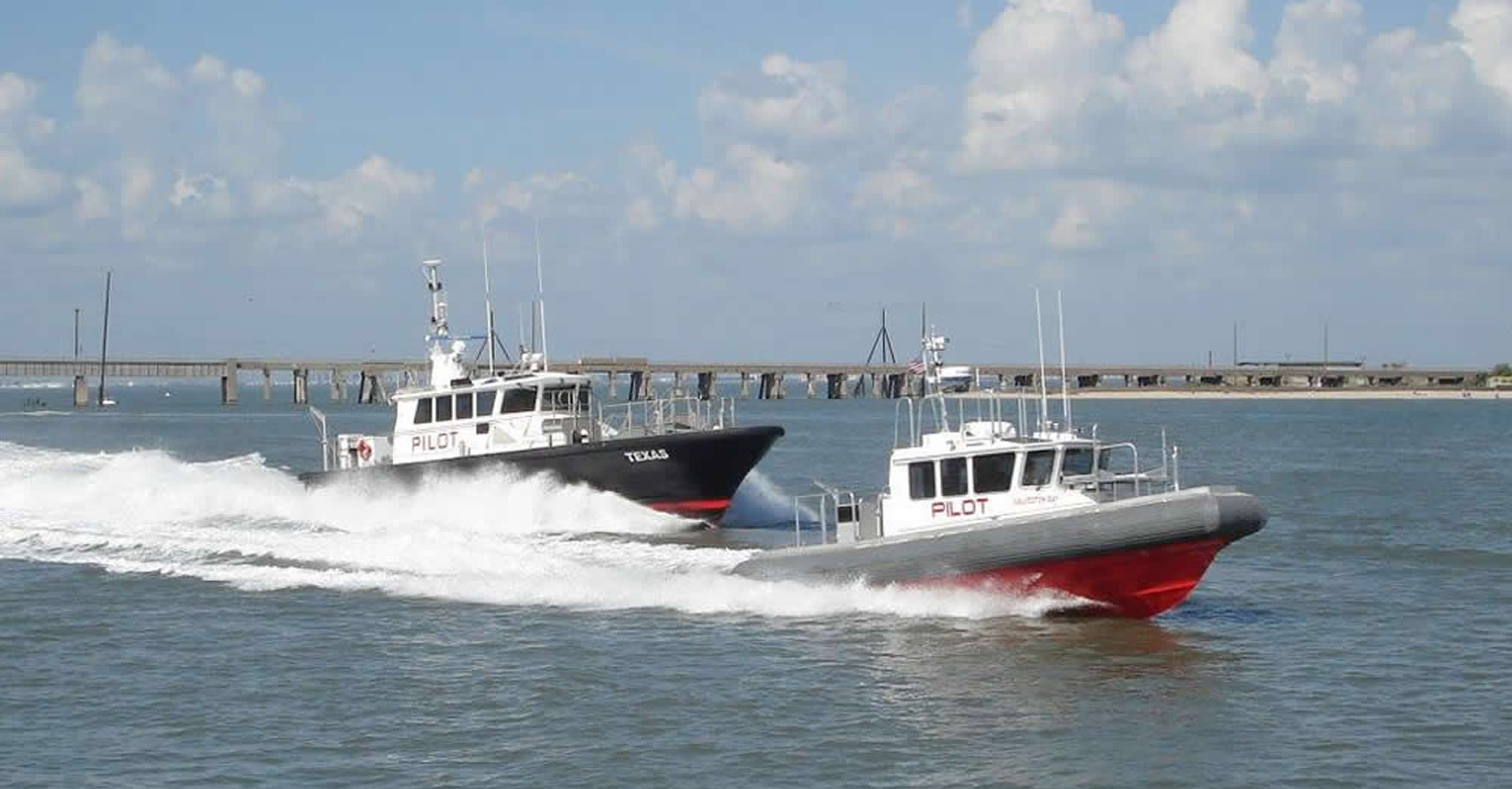The Hunt Deep-V Pilot Boat Explained
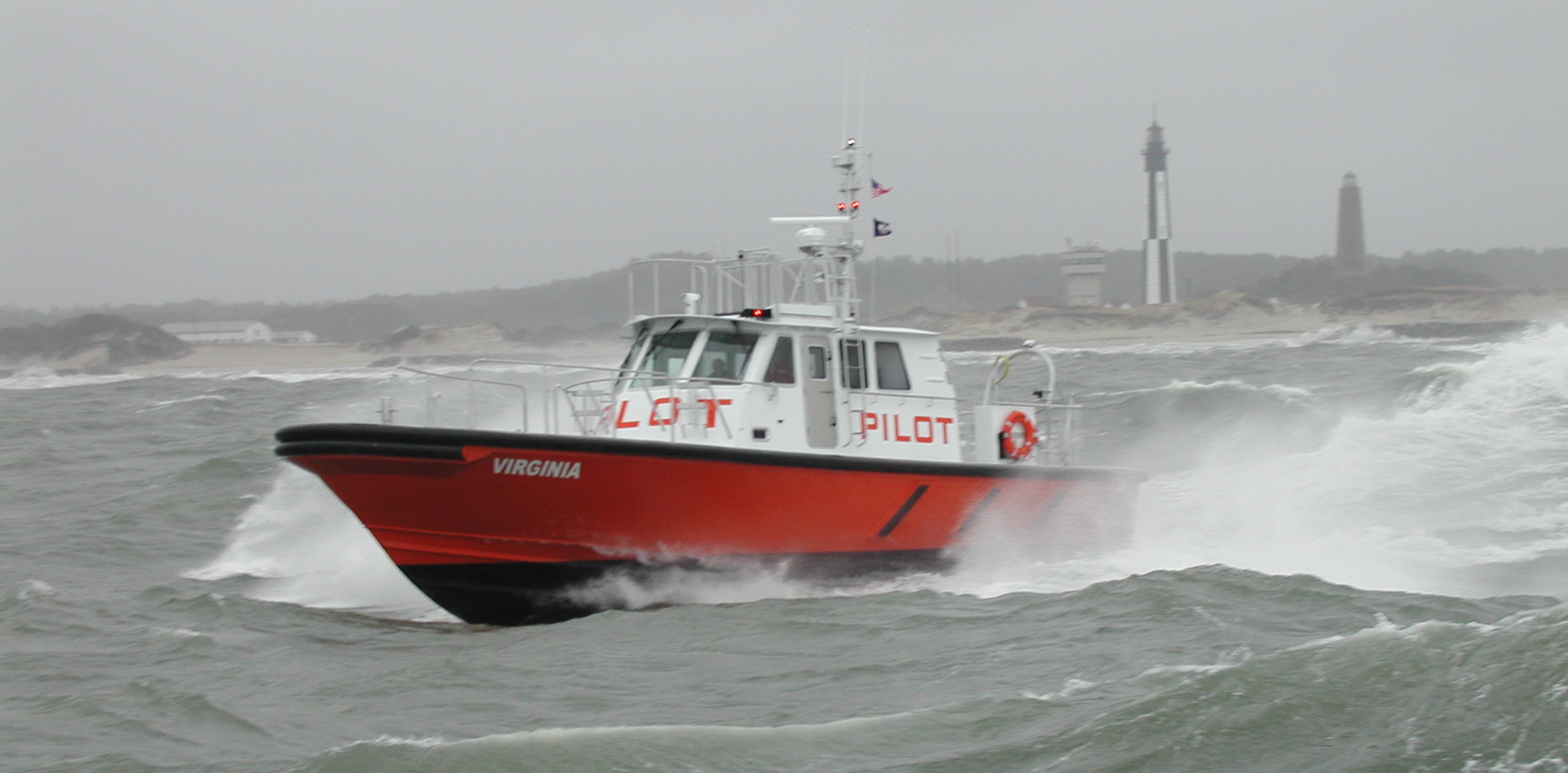
There is a lot of opinion and misinformation about boat design. In magazines, advertising, blogs, and websites, you will come across many concepts, rules of thumb, old sea tales, and pseudo-science that may be true or never was. Old design concepts are repackaged as "new", but in reality they are a step backwards. How to sort it all out?
One way is to consider the source. Ray Hunt Design has been in the business of boat design for over 60 years. Ray Hunt was a world champion sailor and designer whose contribution to powerboats includes the Boston Whaler and the Deep V hull.
Ray Hunt Design carries on his legacy today with a team of naval architects, engineers, and designers. Since the introduction of the Deep V hull with the Bertram 31 in 1960, we have designed hundreds of powerboats around the world. We have designed 10 ft. PWCs and 120 ft. motor yachts, patrol boats, and of course many pilot boats.
Today, we are designing new boats for a variety of clientele including major manufacturers, private yacht owners, commercial operators, police, Navy and Coast Guard. It is doubtful there is another firm with as much experience in the field of small craft design. The following describes the design features of a modern Hunt Deep-V hull and how we optimize it for each new requirement.
Still the Best
The Hunt Deep V hull is still the best shape for speed and seakeeping in rough water. After 60 years, no one has conceived of a better practical hull shape for rough seas. It is a testimony to Ray Hunt’s genius. All Hunt Deep V hulls are geometrically similar, but each new hull is optimized for its specific task. Pilot boats and offshore patrol boats are generally given the very best performing hull shapes to cope with high seas without compromise. Yachts and other inshore light duty craft can accept compromises for accommodations and utility. Many hulls are called deep-vs and other designs claim to be better. To the untrained eye the differences can be hard to discern, and they can be subtle, but they are there. Here is why the Hunt Deep V hull is superior to all others.
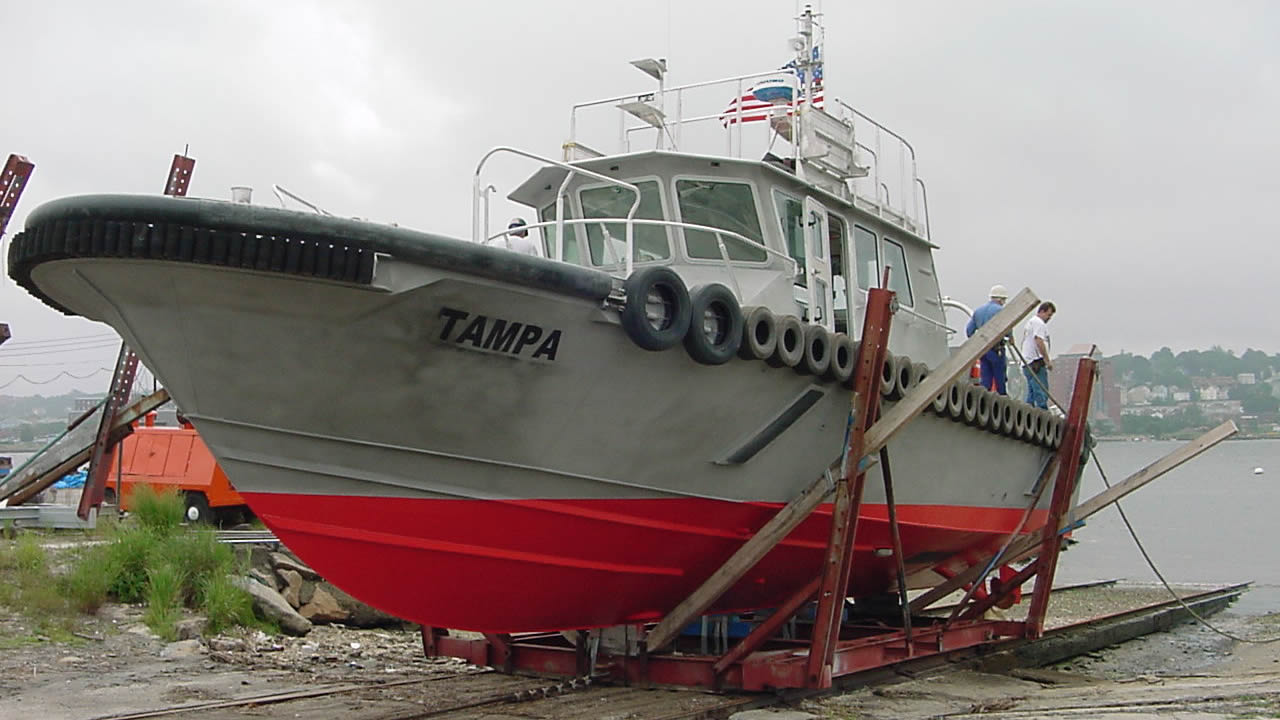
Balance
We believe in a balanced hull. That is, a hull shape without extremes that will run well up wind and down, with sure handling and control. Hunt Deep Vs are single hard chine hulls with full length deadrise. This shape has proven to provide excellent control at all headings.
Displacement (volume) is evenly distributed along the hull moving the centers of buoyancy and lateral plane aft for better directional control. In contrast, a warped hull with flat sections aft and deep and sharp sections forward has its centers of lateral plane and buoyancy well forward. The warped hull will tend to pivot about these forward points especially in down sea conditions and broach or simply be just hard to steer. The volume of the full length deep v shape is far more powerful than a slender keel in maintaining directional control.
Hands off steering with a deep-v hull is the norm. But perhaps the number one reason to have a V hulled boat is that V hulls bank inward in a turn where a flat bottomed hull will lean outward, a very scary attitude for sure.

Ride Quality
Ride quality depends on several factors; deadrise, waterlines, weight, running angle, chines and other control surfaces.
Deadrise and Waterlines
More deadrise yields a softer impact. However, too much deadrise can result in a bow that is so sharp that it wants to steer the boat. A balance must be struck. Hunt hulls have about 50 degrees deadrise at the forward end of the waterline. This angle in partnership with fine waterlines gives a soft ride. Deadrise aft varies between 18 and 24 degrees and twists to 25 to 30 degrees amidships. The rate of change in deadrise is important to good performance and varies depending on boat speed. Some so called deep-v hulls will maintain the same deadrise forward as aft, typically about 20 degrees. These monohedron hulls will have a much harsher ride as the bow will be blunt.
Our cut away forefoot profile mitigates any tendency for broaching as it will dig in less than hulls with deep sharp forward sections or wave piercing bows. Widely flaring topsides above the chine deflect spray and introduce reserve buoyancy when needed.
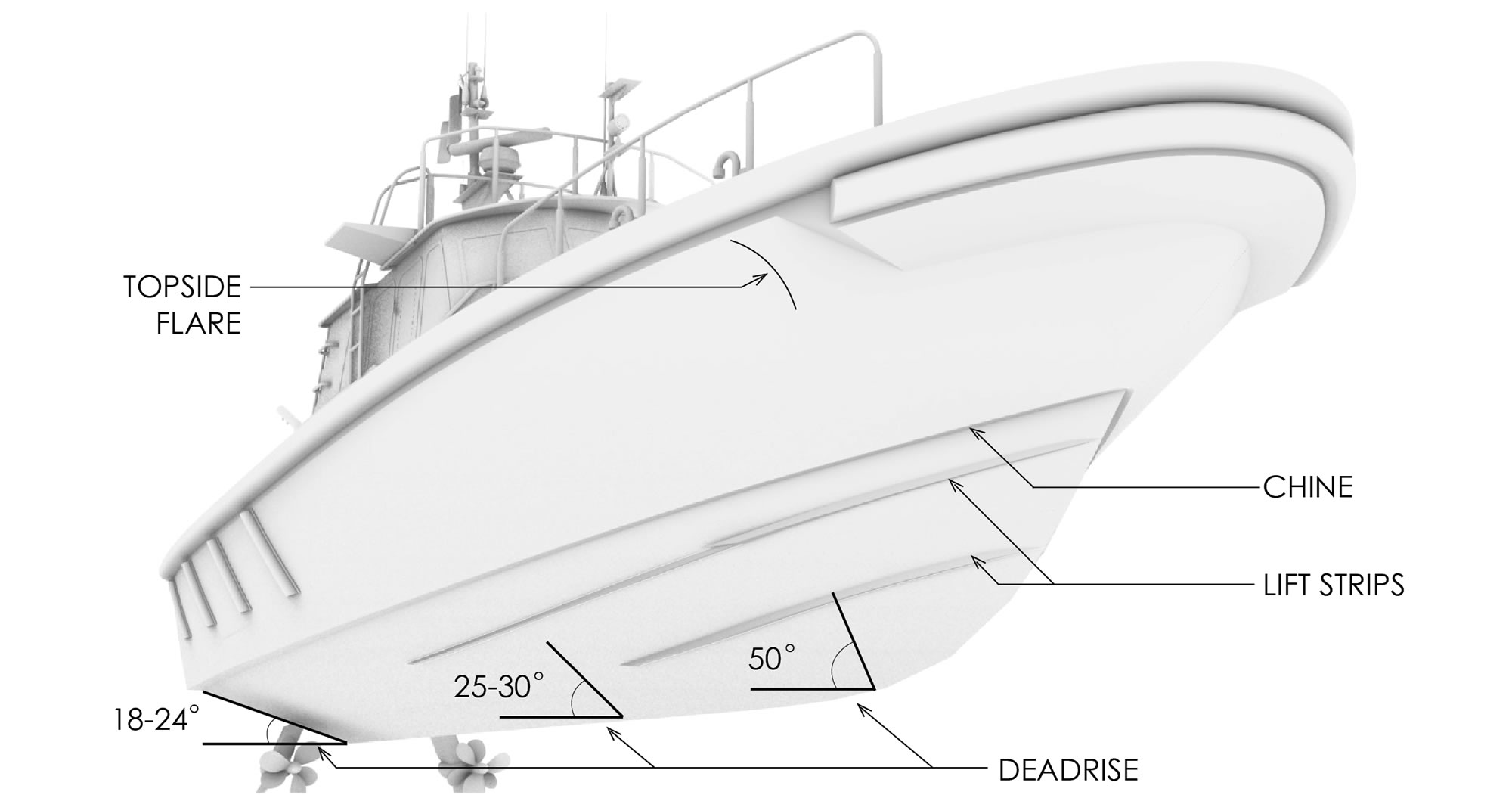

Weight
A big factor in ride comfort. A heavy boat will generally be more comfortable than a lighter boat. The light boat will bounce and rebound over waves while the heavy boat plows right through. However, the heavy boat will be slower and less efficient. So when speed is a goal, a compromise must be struck. We use a factor called bottom loading to size a hull. Simply it is pounds of boat per square foot of planing area. With data from the hundreds of hulls we have designed, we have a very good idea of the desirable weight range for any given size and application; not too heavy, nor too light. Again balance is the goal.
Running Angle
There is no one perfect trim angle. It depends on sea state, speed, and direction. Going up wind in a chop, a low angle is best often 1-2 degrees. The low angle allows the fine sections forward to impact the seas versus the fuller sections further aft. Off the wind in a big following sea you want to get the bow up to prevent any tendency to bow steer, so 4-5 degrees is best. This is why trim control devices like trim tabs or interceptors are a good idea. They are not to correct a problem but rather to enhance the performance of the boat. Planing is like flying, and to get the most from it, a planing boat needs to have control surfaces similar to those found on aircraft. No modern planing boat should be without trim control. It would be like an airplane without flaps.
Chines, Lift Strips, and Spray Rails
We need these surfaces to control flow over the hull. We need to clear water off the hull to reduce drag, add lift, enhance stability, and of course knock down spray making the boat drier. By peeling water off the hull they reduce wetted surface for less drag improving speed and efficiency.
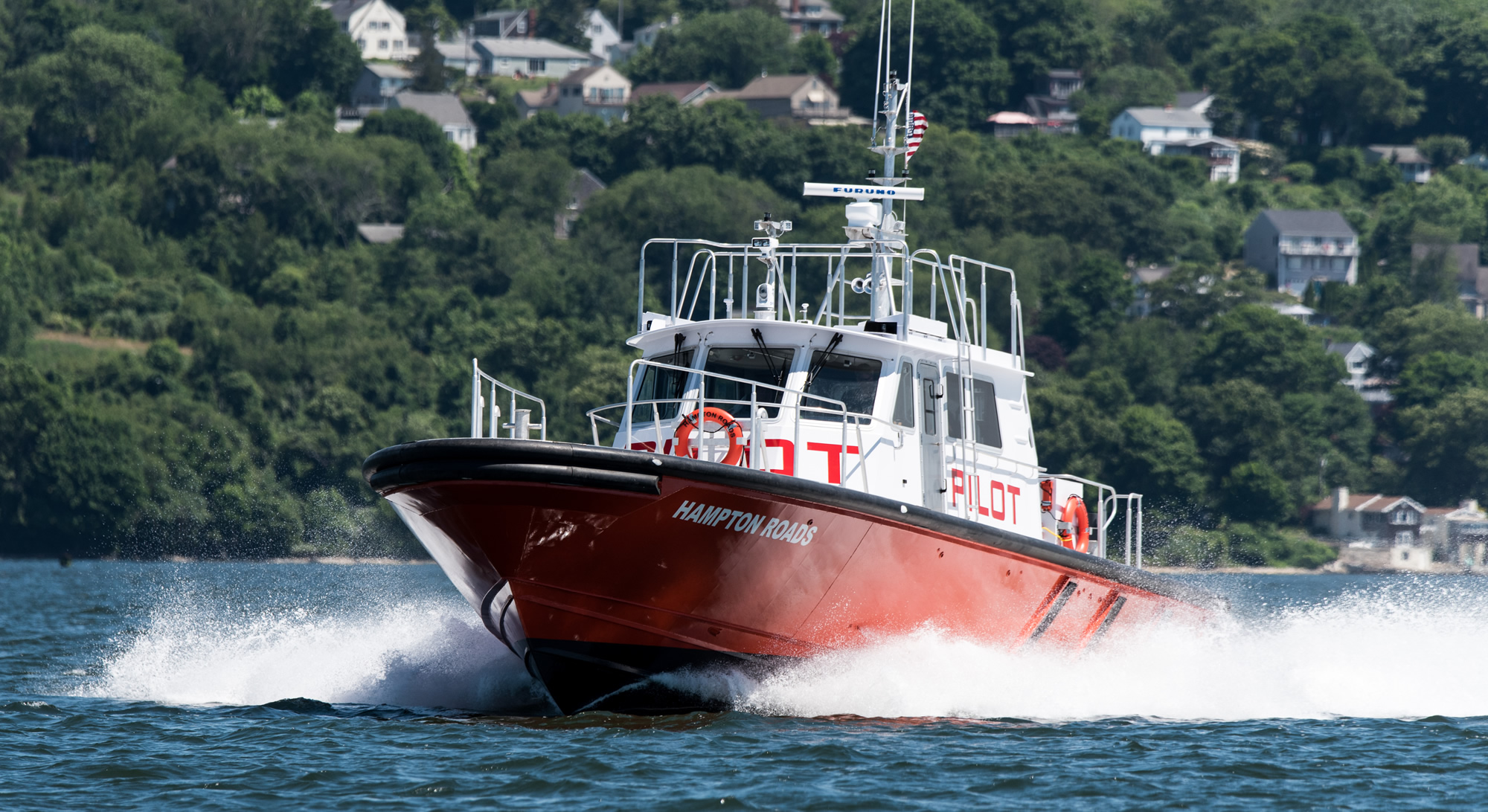
Stability
Stability can be broken down into two parts – Static and Dynamic.
Static Stability is largely a function of two major factors, water line beam and vertical center of gravity. Early deep V hulls had a reputation for rolling when at rest and that was because they were designed with narrow water planes. Skinny hulls go faster. Our current hulls are designed with the chine in the water from amidships aft and the waterline beam is quite generous and thus our hulls are very stable at rest and at low speeds like when boarding. Again we look for balance in our designs, speed with stability.
Dynamic Stability - Underway the Hunt hull picks up dynamic stability as the planing forces begin to work on the bottom. These forces work normal to the bottom surface and so when the boat heels the lifting force works on the V hull to right it whereas on a flat bottomed hull the forces work normal to the flat bottom and actually add to the heel.
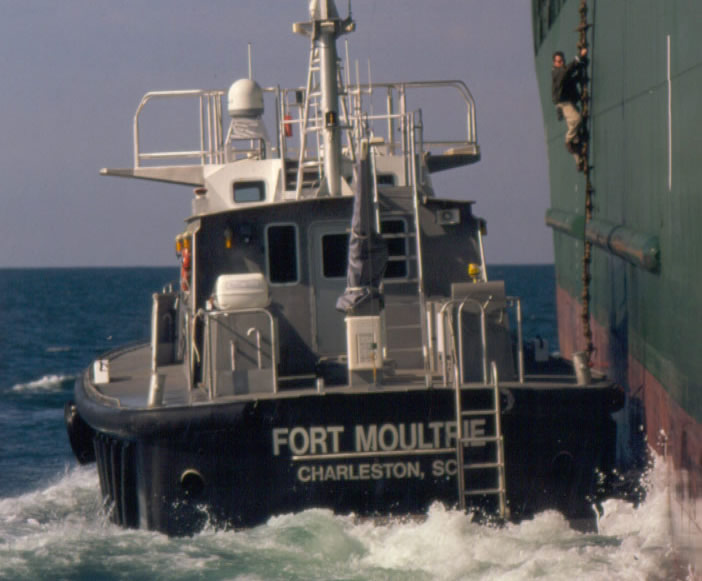
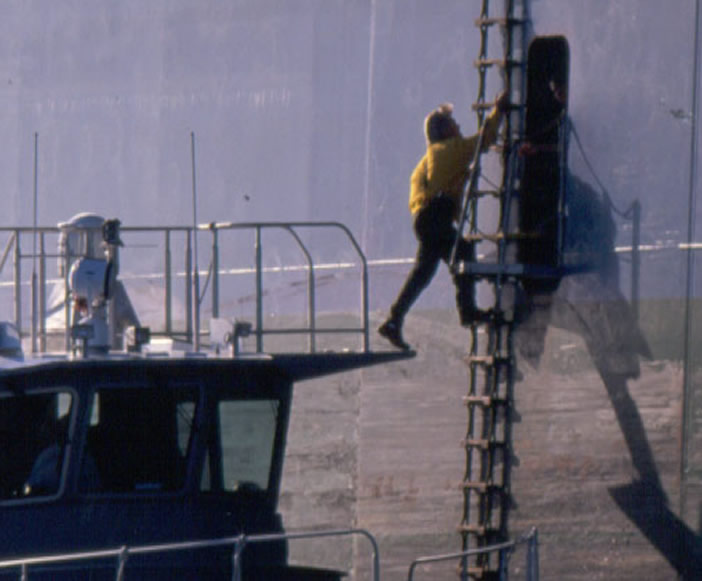
See the following illustration. As it shows, the V hull picks up volume (buoyancy) as it heels increasing the righting moment. And the dynamic forces add to the righting moment, too. While on a flat-bottomed hull the forces act parallel to the heel angle offering no mitigation to heeling.
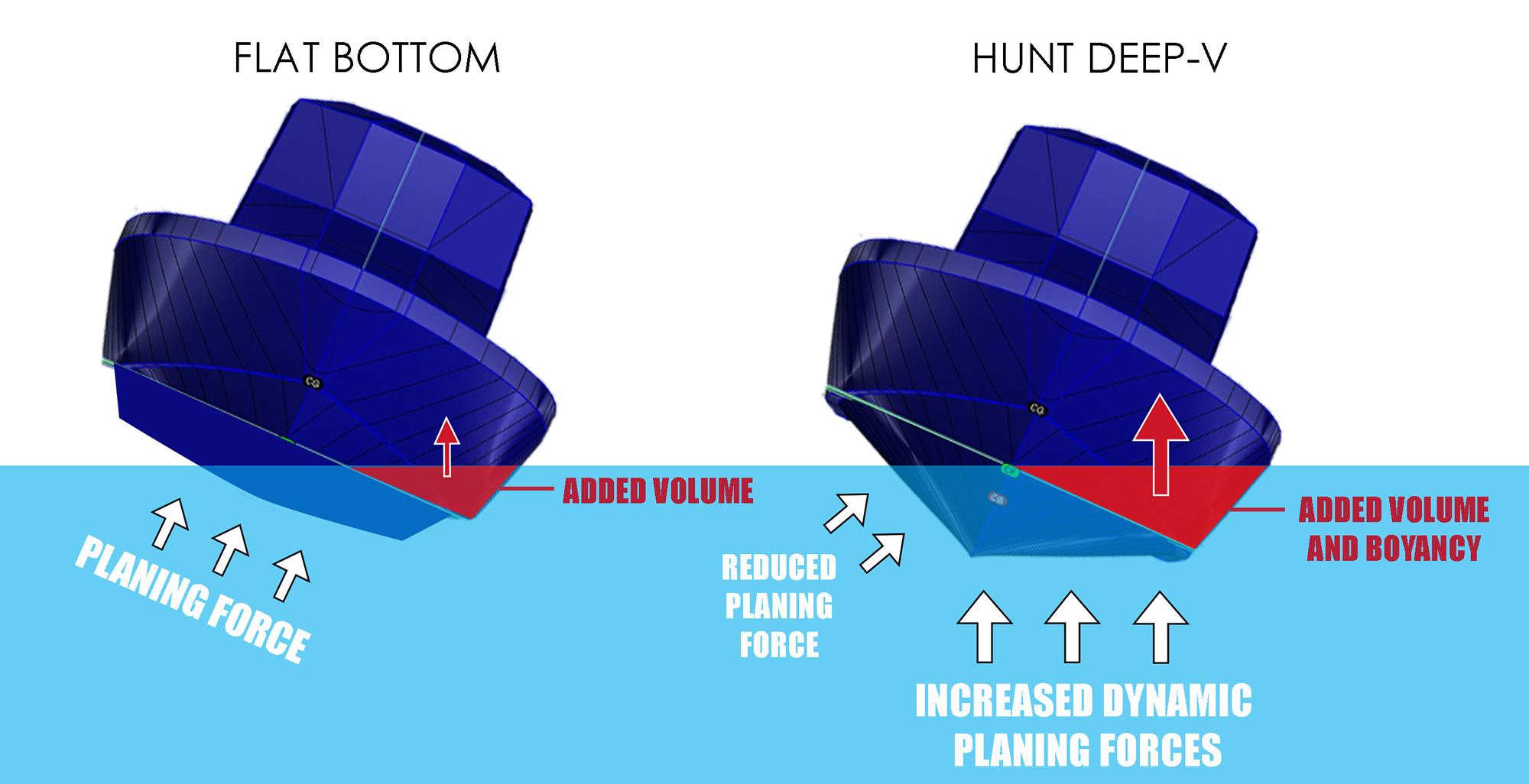
Chines and Lift Strips
Chines and lift strips - Our large single chine, together with properly placed lift strips, enhance stability in several ways. Water coursing over the rounded forward hull sections creates a suction that can actually heel a boat over. It acts just like air over the wing of an airplane does. We keep our hull forward sections and waterlines very straight to minimize curvature and suction. The chine and strips scrape the wake off the hull eliminating this suction, improving stability. Hulls without strong chines forward very often experience poor dynamic stability because the bow wake stays attached to the hull causing suction. Sometimes it can result in a severe loss of control or a broach.
Lastly by Newton’s third law (action = reaction) the strips add a lifting force. They knock the water down lifting the hull up. This force is applied far out from centerline and so adds to the righting moment. The chine of our hulls runs full length and is at the maximum beam where it adds another significant lifting (stabilizing) force. Where on round bilged or double chine hulls the wake will roll around the turn of the bilge and stay attached. This is added wetted surface is more drag and less lift and so less stability and efficiency.
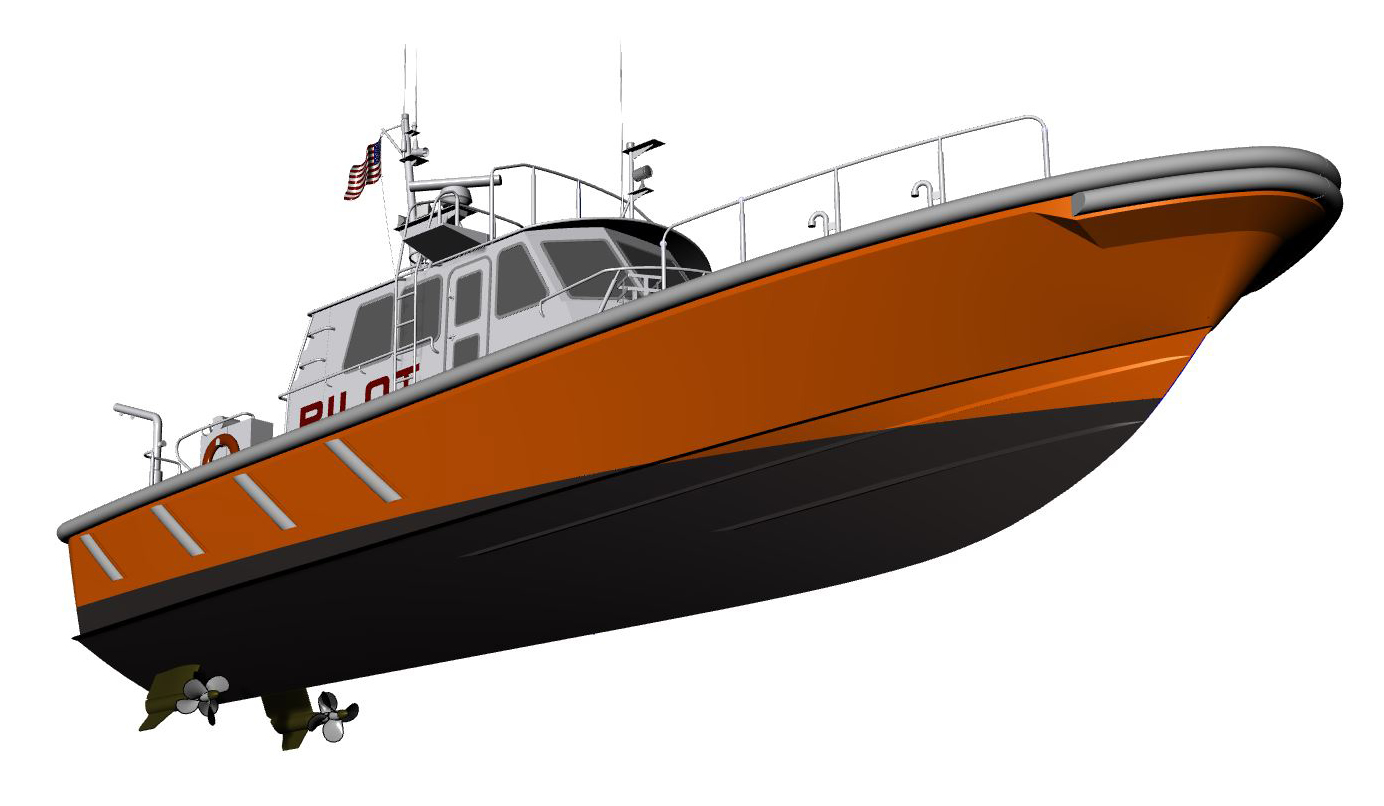
While it may be that the number of opinions will always outnumber the people in a room, the laws of physics are immune to influence. Get the physics right, make well balanced design decisions, and the boat will be right, too.
